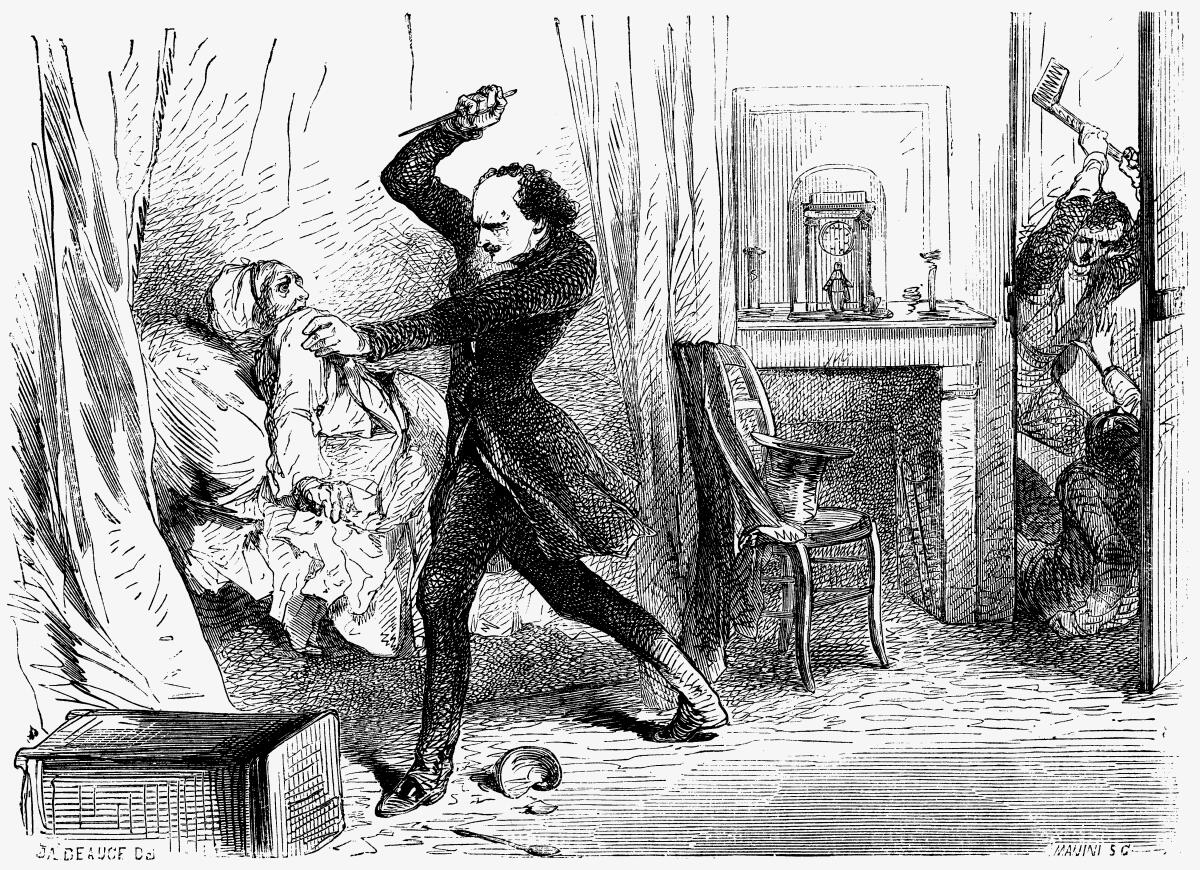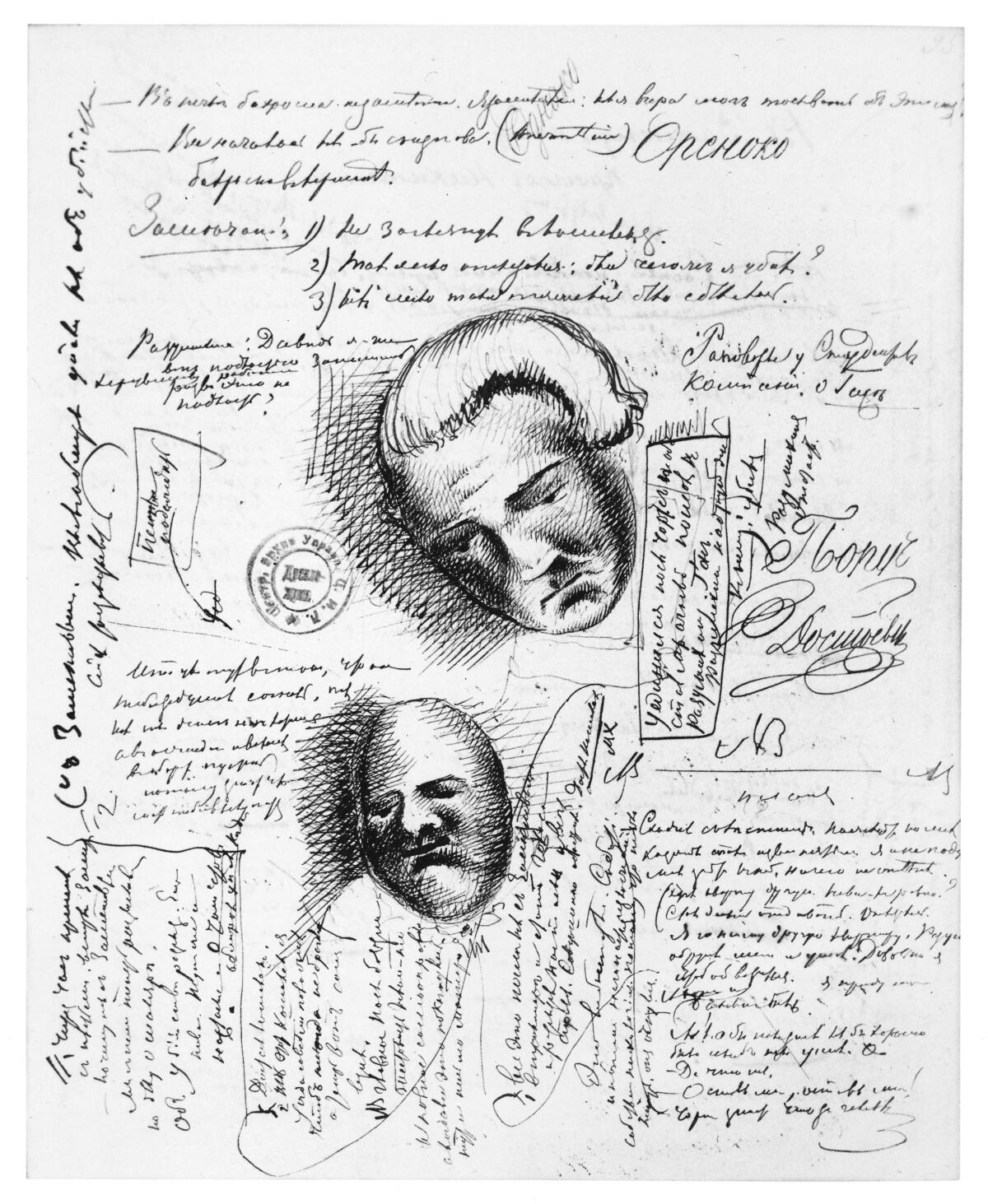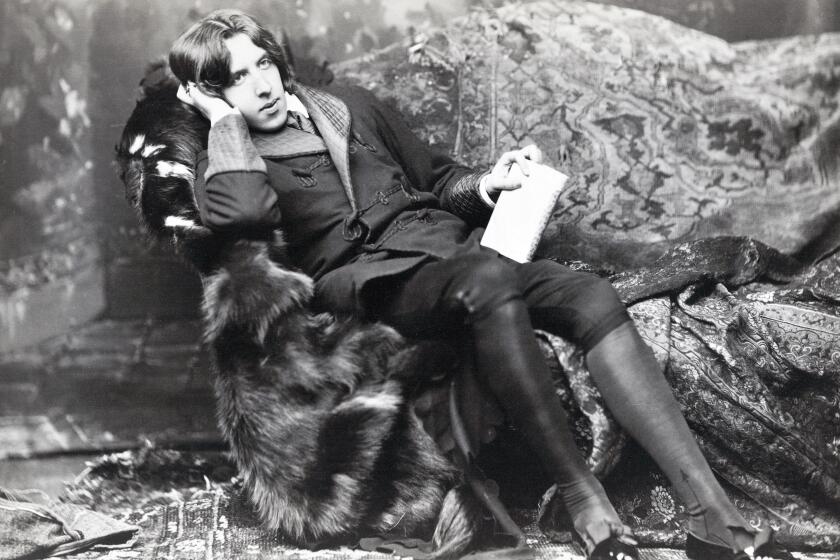Review: The real-life demons that drove Dostoevsky to write his masterpiece

On the Shelf
The Sinner and the Saint: Dostoevsky and the Gentleman Murderer Who Inspired a Masterpiece
By Kevin Birmingham
Penguin: 432 pages, $30
If you buy books linked on our site, The Times may earn a commission from Bookshop.org, whose fees support independent bookstores.
Burdened by gambling debts so onerous he feared imprisonment (again), suffering debilitating epileptic seizures and reeling from the deaths of his wife and his brother, Fyodor Dostoevsky in 1865 began what would be a masterpiece. âNothing of this kind has yet been written among us,â he told a friend. âI guarantee its originality, yes, and also its power to grip the reader.â
âCrime and Punishmentâ would live up to its authorâs hyperbole, though only after a difficult and agonizing birth. Written rapidly, in panic, to stave off his creditors, the 90-page story he planned morphed into the hefty novel that, though dismissed by Vladimir Nabokov as âso crude and so inartistic,â earned its place in the canon of world literature.
The creditors whom Kevin Birmingham relied on to write âThe Sinner and the Saintâ â a dexterous biblio-biography about how âCrime and Punishmentâ came to be born â include a formidable array of scholars as well as Dostoevsky himself. Yet the biographer betrays no sign of panic. The tale he tells is rich, complex and convoluted, and though he must have struggled in constructing it, Birmingham writes with the poise and precision his subject sometimes lacked. (Though it worked out all right for him.)

Dostoevsky struggled to craft an account by Raskolnikov, a brooding law school dropout, of how he killed a pawnbroker and her half sister with an ax. At a crucial point, he grew disgusted with what he had written, discarded it all and started from scratch. What enabled him to find traction was his decision to switch from first-person narration to an intimate third-person perspective, a vantage point that would, he said, be âinvisible but omniscient.â As Birmingham asks, âWhy not peer over Raskolnikovâs shoulder while heâs face-to-face with the stupid, deaf, sick, greedy pawnbroker, waiting for his moment?â
Jenn Shaplandâs âMy Autobiography of Carson McCullersâ and Mark Dotyâs âWhat Is the Grass,â about Walt Whitman, are hybrid memoir-biographies.
Birmingham himself applies this approach to Dostoevsky, peering over the Russian masterâs shoulder as he peers over Raskolnikovâs. The result is a book about a book, an inside look at literary creation. The reader becomes a spectator to the construction of âCrime and Punishmentâ while learning a great deal along the way about the criminal justice system in 19th-century Russia, temporal lobe epilepsy, promissory notes, phrenology, gold mining, nihilism and much else.
âA man would turn over half a library to make one book,â claimed Samuel Johnson. The principle is no less true for those who write one book about one other book. Michael Gorraâs âPortrait of a Novelâ (2012) and Rebecca Meadâs âMy Life in Middlemarchâ (2014) both benefit from their authorsâ extensive acquaintance with more than just âThe Portrait of a Ladyâ and âMiddlemarch,â respectively. John Livingston Lowes filled more than 600 pages of âThe Road to Xanaduâ (1927) while documenting the books Samuel Taylor Coleridge read before writing two poems.
This is not even Birminghamâs first book about a book; In 2015âs âThe Most Dangerous Book: The Battle for James Joyceâs Ulysses,â he did for the quintessential modernist novel what he now does for Dostoevskyâs quintessential Russian novel. However, while much of the earlier volume focuses on efforts to ban and even burn âUlyssesâ after it was published, âThe Sinner and the Saintâ concludes when the final paragraphs of âCrime and Punishmentâ are written. It is less interested in the reception of Dostoevskyâs novel than the experiences â including a commuted death sentence and four years of hard labor in Siberia for socialist sympathies â that led him to write it.

One crucial influence was the case of Jean-François Lacenaire, a sociopathic French poet who was executed in 1836. Dostoevsky translated and published an account of Lacenaireâs sensational crimes, including an ax murder, in Vremya, a magazine he edited. Birmingham braids together chapters paralleling Lacenaireâs trajectory toward the guillotine, Raskolnikovâs toward imprisonment and Dostoevskyâs toward completion of his book. Though Lacenaire is not always as interesting as Raskolnikov or Dostoevsky, the crosscutting is generally effective at suggesting similarities and sources. As Birmingham notes, the failed attempt on April 4, 1866 by a young revolutionary to assassinate Tsar Alexander II also inspired Dostoevsky during the final stages of composition.
Matthew Sturgisâ âOscar Wilde: A Lifeâ exceeds its predecessors on two fronts â sketching late Victorian London and chronicling Wildeâs sad downfall.
For all the research Birmingham brings to bear, âCrime and Punishmentâ is not thinly veiled true crime. Nor is it a whodunit, because it is clear from the outset that Raskolnikov is the perp. Instead of teasing the reader with the question of who is guilty of two grisly homicides, the novel entices us to turn its pages to find out why. And yet, Raskolnikov remains confused about his own motives: Does he kill the old pawnbroker to appropriate her valuables for himself or for others? Or is the killing an experiment to test his theory that ordinary moral constraints do not apply to superior individuals?
So it is with Birminghamâs mystery: We already know âCrime and Punishmentâ was written and published. Instead, the questions that drive this book are: How and why?

Birmingham contends that Dostoevsky wrote âa novel about the trouble with ideas. It is not a novel of ideas.â The ideas that collide in Raskolnikovâs fevered mind are never resolved, in part because of how the novel was constructed â in haste and in chapters that appeared serially. While working on the opening section, Dostoevsky did not anticipate that the benevolent prostitute Sonya and the scoundrel Svidrigailov would later seize control of the narrative. The novelâs power derives from its anxious incoherence.
Birmingham has a different task in this book about a book. In contrast to the untidy brilliance of its subject, âThe Sinner and the Saintâ is an admirably lucid distillation of hundreds of other texts, including Joseph Frankâs monumental five-volume biography of Dostoevsky. And yet, in its category, it is an audacious effort â especially given that Birmingham was dependent on others to translate sources from Russian and French for him. Not by or for an academic specialist, his book instead invites any English-language reader to peer over a famously tormented Russian authorâs shoulder while his deathless novel comes to life.
Kellmanâs most recent books are âRambling Prose: Essaysâ and âNimble Tongues: Studies in Literary Translingualism.â
With âA Splendid Intelligence: The Life of Elizabeth Hardwick,â Cathy Curtis brings out the first biography of the influential author, critic and editor.
More to Read
Sign up for our Book Club newsletter
Get the latest news, events and more from the Los Angeles Times Book Club, and help us get L.A. reading and talking.
You may occasionally receive promotional content from the Los Angeles Times.









